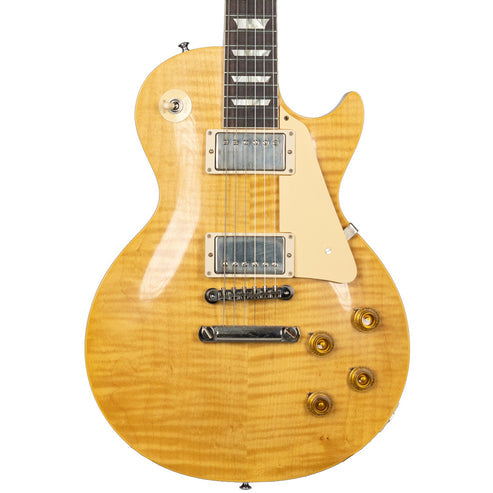

St. Vitus: The Church of Metal in Brooklyn
In a city that often feels like it’s paving over its soul one venue at a time, St. Vitus stood tall—or more accurately, stood grim and black-clad—as one of the most vital hubs for heavy music in the United States. Located in a repurposed plumbing school in Greenpoint, Brooklyn, the 250-capacity club opened its unholy gates in April 2011, founded by Arty Shepherd, David Castillo, and George Souleidis. From its altar-like stage to the red-lit bar soaked in doom and distortion, Vitus was more than a venue—it was a sanctuary for the heavy, the weird, and the loud.
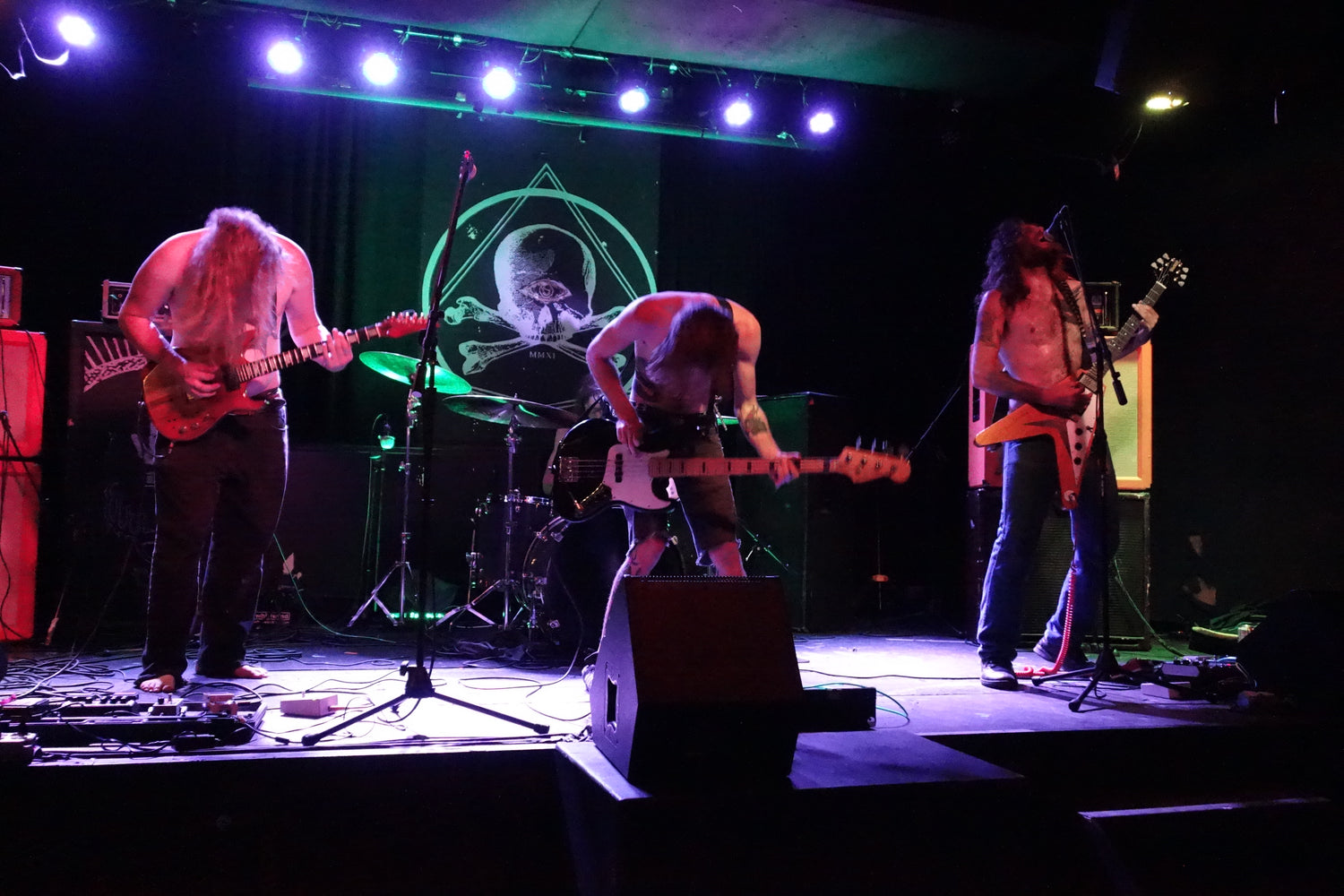
Destroyer of Light performing at saint vitus
A DIY Temple with a Global Reputation
Though small in size, St. Vitus earned international renown as a mecca for metal, punk, doom, hardcore, goth, and experimental music. Bands that typically commanded much larger venues would stop in for intimate, surprise, once-in-a-lifetime performances. Historic names who blazed through the black-lit room include:
Megadeth—yes, the Megadeth—in a room of 250
Anthrax, playing a surprise hometown crusher
Dave Grohl and Krist Novoselic, performing as Foo Fighters after their Hall of Fame induction
Sleep, Carcass, Converge, Eyehategod, Chelsea Wolfe, King Woman, and Deafheaven, among others
Even if you didn’t know who was playing, a night at Vitus felt spiritually resonant—dim lighting, candle wax, and the scent of beer and amplifier tubes hanging in the air like incense.
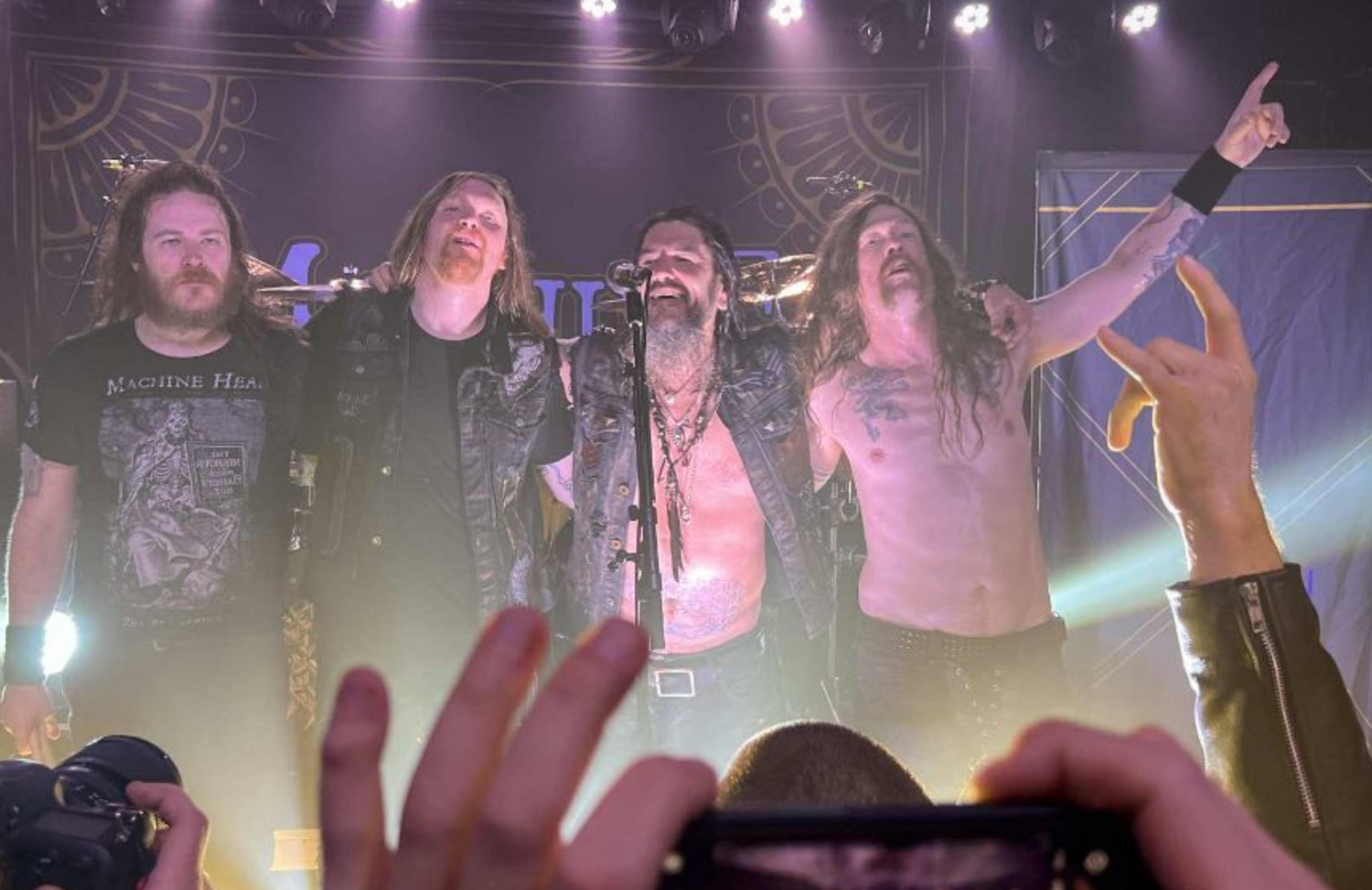
Machine Head Performs
The Sound & Gear That Made It Roar
Much of Vitus’s mystique lay in its sound and gear culture. The venue’s custom-tailored PA system handled extremes—from crushing low-end fuzz to blistering black metal clarity—without ever sounding muddy. A bone-shaking backline of Orange, Ampeg, and Marshall amps made the room feel alive.
Beyond performances, Vitus hosted gear-centric events—pedal expos, amp demos, release parties, and boutique showcases—featuring names like EarthQuaker Devices, Death By Audio, and Dunable Guitars. For many, going to Vitus meant both hearing the music and experiencing the cutting edge of tone.
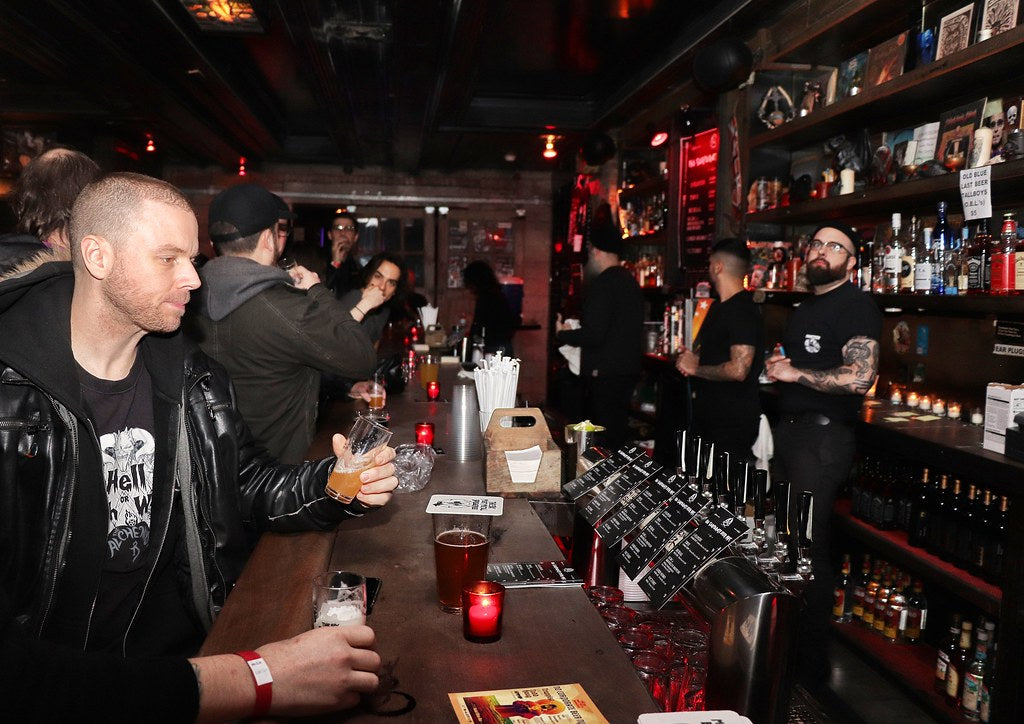
A Living Room for the Underground
Vitus was less a bar and more a gathering of souls. Its black walls, gothic décor, and glowing altar stage gave it a haunted reverence. The crowd wasn’t just there—they belonged. Between sets, you might bump into band members at the bar or outside by the roll-up gate.
It also hosted metal trivia nights, karaoke, live podcasts, and occasional art shows. During the pandemic, it pivoted to livestreams and fundraisers, keeping the community connected when stages were silent and raising over $125,000 to support staff and artists.
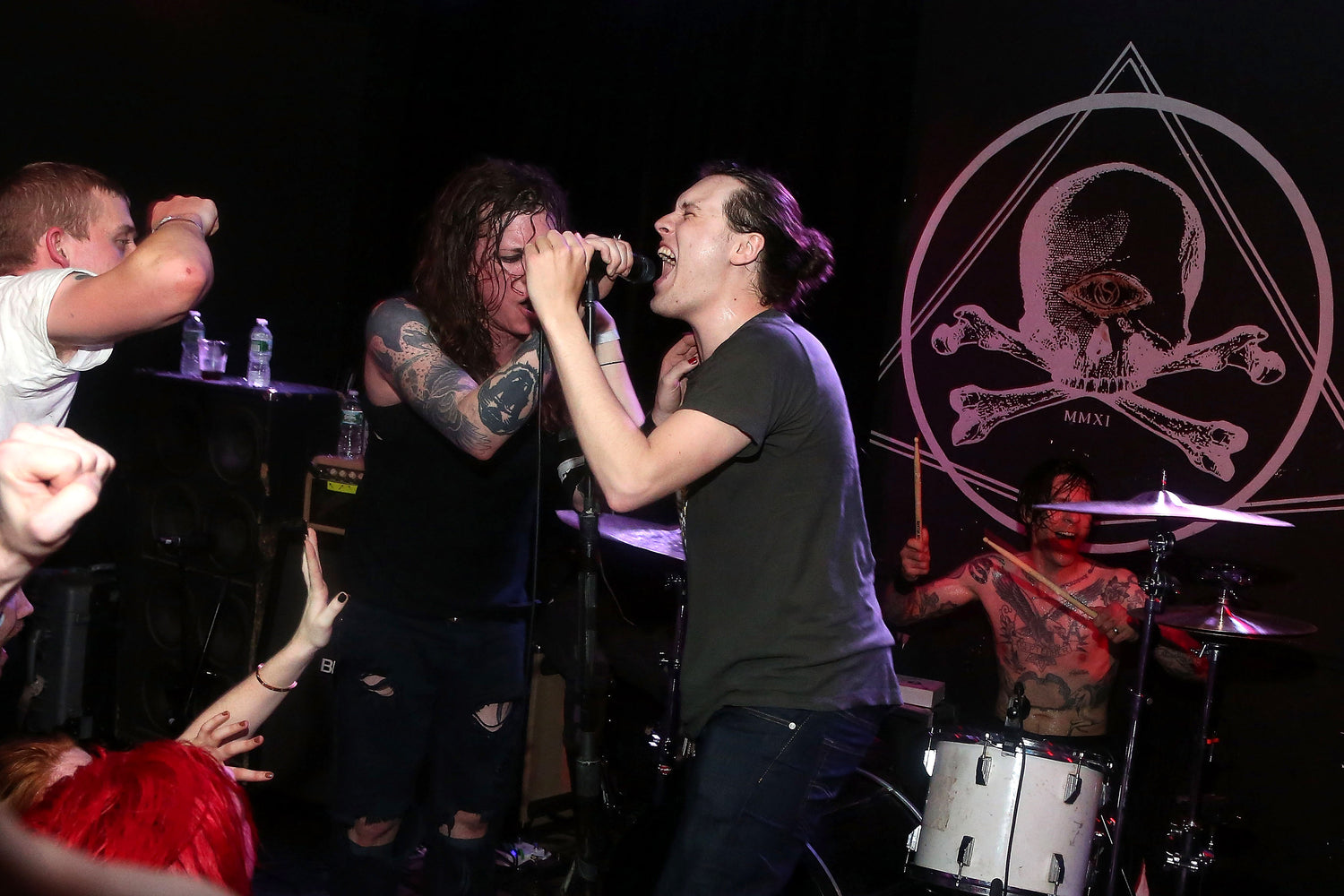
Mindforce and the Sudden Shutdown
One of the final major blowouts came during a Mindforce show—energetic, packed, and pulsing with meaning—when the NYC Department of Buildings entered mid-set in February 2024, shutting the venue down for safety and code violations. The abrupt halt reinforced a sobering fact: safety codes aren’t bureaucracy—they’re protection for places where energy runs hot and crowds run deep.
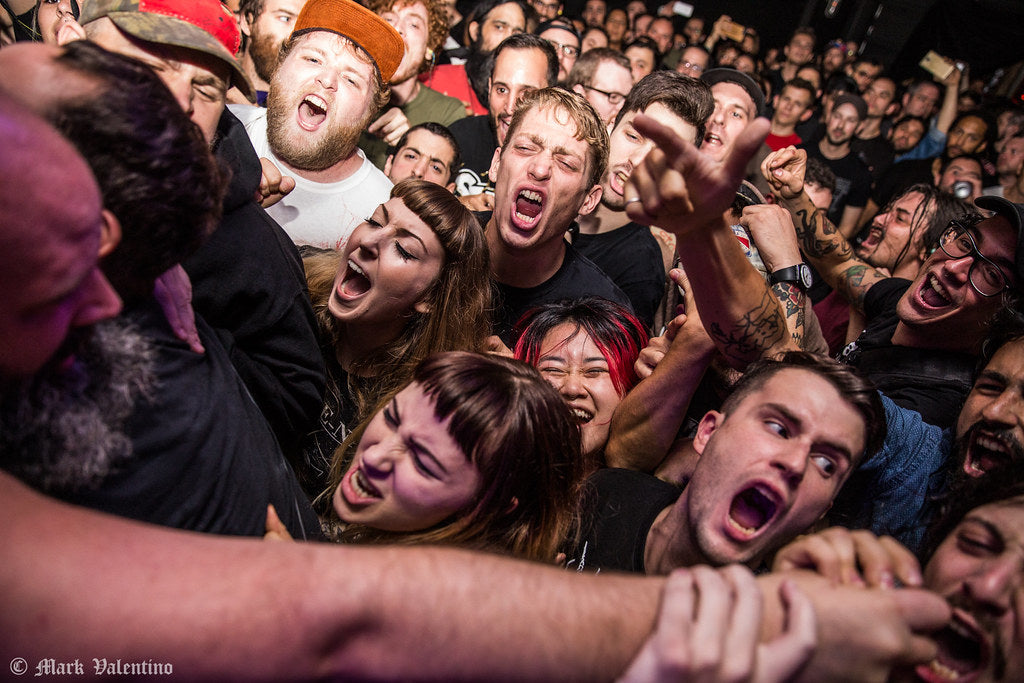
Photo credit Mark Valentino
A Rocky Road to Permanent Closure
The community rallied hard. A GoFundMe launched immediately after the shutdown raised substantial support for staff and efforts to reopen. The team began submitting paperwork for the necessary permits and even secured certain approvals, but never obtained the final work permits required to bring the venue into full compliance.
Through spring and summer, they ran “Saint Vitus Presents” events around NYC, keeping the brand alive and giving fans a space to gather.
At last, in mid-August 2024, after months of grappling with bureaucracy and hope, the team posted on social media:
“1120 Manhattan Ave. 2011–2024. Saint Vitus Bar to be continued…”
It was the clearest signal yet that the original location was officially closed—even if the spirit lived on.
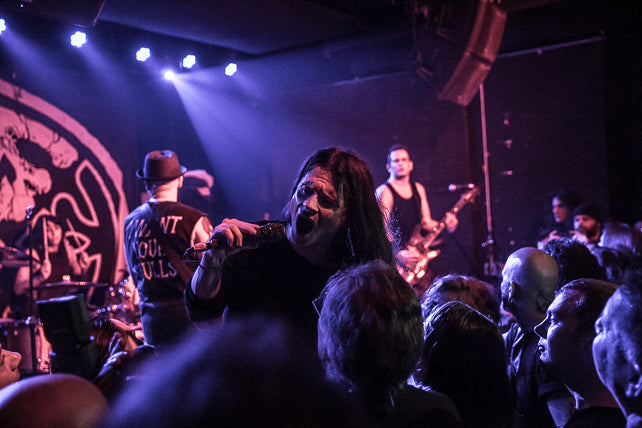
Life of Agony Plays
Shut Down, But Never Silenced
For many, this wasn’t simply a venue lost—it was a bastion of DIY culture, an antithesis to commercialized mainstream spaces. It had already persevered through noise complaints, gentrification, and a devastating pandemic shutdown. But ultimately, it was code enforcement and permit logistics—not a lack of love—that closed the chapter.

The Legacy Lives On
The closure of St. Vitus ripped a hole in Brooklyn’s musical infrastructure, but what it built will endure. It created a rare space where underground culture wasn’t just accepted—it was revered. For over a decade, it was a rite of passage for artists and fans alike—a place where strangers became comrades at the bar, where local openers shared space with legends, and where the line between stage and crowd was as blurred as the feedback swirling in the speakers.
It was a cultural hub—a networking node, gear incubator, and artistic catalyst. Its visual identity, from blacked-out exterior to altar stage, became emblematic in festivals and merch around the world.
When the doors finally closed in August 2024, the outpouring of tributes from fans, musicians, and media made one thing clear: “I saw them at St. Vitus” isn’t just a memory—it’s a badge of shared experience. The building may be gone, but the stories, the tone, the community—they live on in every riff, every memory, every whispered: “Remember that night at Vitus?”
Blog posts
View all-

Alto Music Holiday Gift Guide 2025
The Holidays Are Here — and So Are the Best Deals of the Year The holiday season can get hectic—but there’s no need to let the “holiday crunch” become overwhelming. At...
Alto Music Holiday Gift Guide 2025
The Holidays Are Here — and So Are the Best Deals of the Year The holiday season can get hectic—but there’s no need to let the “holiday crunch” become overwhelming. At...
-

Blast From the Past: 50 Years of "Wish You Were...
With industry success to back it up, many Pink Floyd fans consider "Dark Side of the Moon" the "greatest album" ever made. With the same breath, the fans (and the...
Blast From the Past: 50 Years of "Wish You Were...
With industry success to back it up, many Pink Floyd fans consider "Dark Side of the Moon" the "greatest album" ever made. With the same breath, the fans (and the...


